Xining, the highland gateway to Tibet, is a crucial stop en route to the Qinghai-Tibet plateau and the only way for travelers to enter China's hinterland at the "Roof of the World". But Xining, the capital of Qinghai province, holds its own with its colorful regional culture and expansive scenery. No wonder many tourists travelling from Xining to Lhasa would spend one or two days in Xining.
Xining has been comparatively slower than its rich coastal counterparts in riding the country's economic miracle, but its fresh air, strong religious communities and idyllic lifestyle have captured the imaginations of many urbanites who dream of life on the highlands and prairies.
The trappings and stress of modern life are not apparent in Xining. Just outside the city, travelers can come up close with livestock grazing on the grasslands under a wide blue sky.
Historic Silk Road stop continues to allure with breathtaking scenery and a lively culture. Once known as an important stop on the legendary Silk Road, Xining is endowed with numerous historical relics and sites left from the interaction of ancient Persian merchants and local Chinese.
Although it is 2,260 meters above sea level, Xining is fronted by mountain ranges in the north that protect it from sweltering and sticky summers and harsh winters. As such, the city is also known as a summer resort capital of China.
Here are some of the major attractions that visitors will find equally unforgettable:
1. Ta'er Monastery
Located 25 km southwest from downtown Xining, the surrounding area of this monastery is the birthplace of the Gelugpa Sect, a branch of Tibetan Buddhism. When the monastery was built, it soon became the religious center of its monks and followers.
Built in 1379 in commemoration of Tsong Khapa, the site has the Lotus Mountains for its backdrop. Its 9,300 rooms and 52 halls are located on the mountain slopes, forming a spectacular view from the mountaintop.
The monastery's architecture combines Han and Tibetan styles. Its lofty temples and halls appear in different sizes but are carefully laid out. Bells that echo throughout the mountains add to the serenity.
The Great Hall of the Golden Roof stands in the middle of the monastery with colorful gates that sport flower patterns embedded with pearls and gems.
Located at the front of the site is the Great Hall of Meditation, where monks gather to practice their faith. The pillars of the hall are decorated with carved religious patterns and on the four walls are pictures that tell the story of Buddha. Butter sculptures, an art considered unique to the area, can also be found in and outside the hall.
2. Qinghai Lake
This is China's largest inland and saltwater lake, covering an area of 4,500 sq km. Locals consider its waters to be a miracle, with various versions of the stories that lie behind its creation.
According to one legend, Wen Cheng, a Tang Dynasty (AD 618-907) princess, married the Tibetan king Songtsen Gampo. When the princess looked into a precious mirror given to her on her trip to Tibet, she saw the life that she left behind and could not stop crying. She threw away the mirror and the moment it landed on the ground, it became Qinghai Lake.
The tears of Princess Wen Cheng formed the vast, azure lake that offers different beautiful scenes of the seasons. Herds of cattle and sheep dot the lush grasslands and surrounding mountains in spring and summer, and the lake gives out continuous ripples on its surface as a result of migrant birds nestling in nearby islands.
In winter, freshly fallen snow blankets the lake. The ice on its surface shines like a large mirror against the blue sky and the surrounding withered leaves in the mountains form a serene and mesmerizing scene.
3. Dongguan Mosque
Built in 1380, this mosque serves as the highest seat of Islamic education in Northwest China and its Muslim architecture attracts millions every year.
Unlike typical mosques, Dongguan's building style combines traditional Chinese architecture with Islamic architecture. During important Muslim festivals, thousands of followers gather here to worship the Prophet Muhammad and to hold various ceremonies.
Eating and drinking
Xining's ethnic diversity has enriched it with a large variety of food, most of it Muslim.
In Shuijing Food Market, travelers can find all kinds of dumplings and lamb kebabs.
Zasui soup, cooked with lamb and beef offal, is the favorite morning snack for locals. Spicy niangpi noodles are a staple. Muslim shops in the city's alleys sell handmade traditional Qinghai old yogurt, which is slightly sour but creamy in texture.

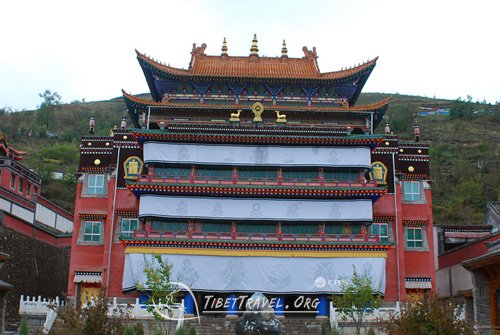
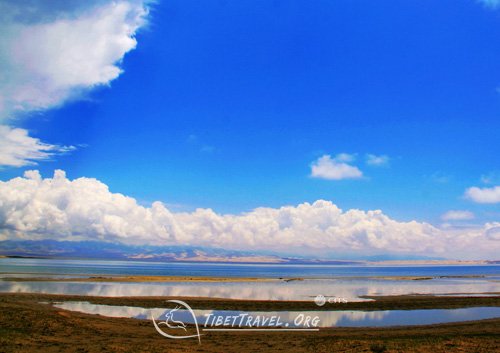
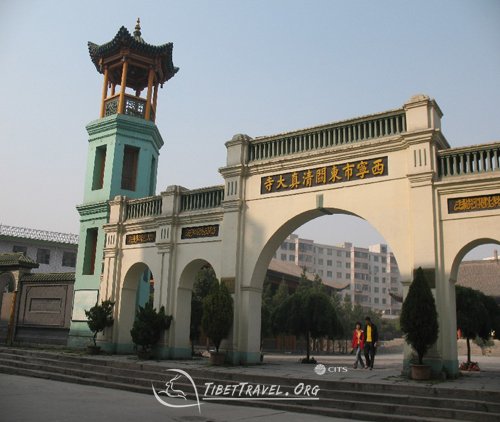




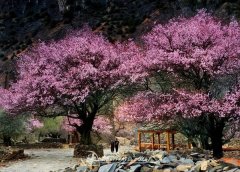
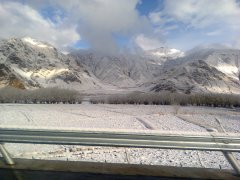


.jpg)




0 Comment ON "Xining, highland gateway to Tibet"